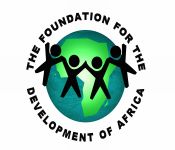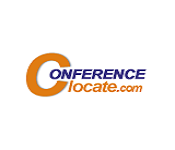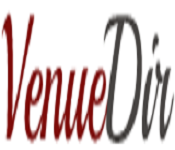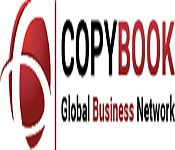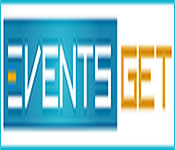Theme: Advancement in the Technologies used in Drug Delivery
Pharma Formulations 2021
After the successful completion of the 16th International Conference on Pharmaceutical Formulations & Drug Delivery, Conference Series with great pride and honour announcing its 17th International Conference on Pharmaceutical Formulations& Drug Delivery November 23-24, 2021 at Vancouver, Canada. This Pharma Formulations 2021 includes a wide range of Keynote presentations, plenary talks, Symposia, Workshops, Exhibitions, Poster presentations and Career development programs
Why to Attend???
Pharma Formulations 2021 Conference is a multidisciplinary program with broad participation with members from around the globe focused on learning about formulations and drug delivery and its advances. This is your best opportunity to reach the largest assemblage of participants from Pharma research community that is from academia, drug delivery entities, medical groups, related associations, societies and also from government agencies, pharmaceutical, biomedical and medical device industries.
Pharma Formulations 2021 will discuss various disciplines involved in the drug formulation procedures and drug delivery technologies; it will educate health care researchers about design, operation, organizing, research computing, regulatory aspects and reporting of formulations. This conference conduct presentations, distribute information, meet with current and potential scientists, make a splash with new pharma research developments, and receive name recognition at this 2-days event. World renowned speakers and the most recent techniques, developments, the newest updates in formulations and drug delivery are hallmarks of this conference.
Who Should Attend and Who You’ll Meet
Directors/Senior Directors/Executive Directors and Vice Presidents/Senior Vice Presidents/Executive Vice Presidents and Heads/Leaders/Partners of
• CROs and CMOs
• Pharma Research Sites
• Pharma/Biotech and Medical Device industries
• Hospitals, Associations
Medical Directors, Principal Investigators, Methodologists, and other Pharmaceutical research professionals along with Academicians: University Faculties like Directors, Senior Professors/Assistant Professors/ Associate Professor, Research Scholars, scientists who are related to pharmaceutical research.
.
Track 1: Novel Drug Delivery Systems
Novel drug delivery is a method of delivering medication to a patient in a manner that increases the concentration of the medication in some parts of the body relative to others. This means of delivery is largely founded on Nano medicine, which plans to employ nanoparticle-mediated drug delivery in order to combat the downfalls of conventional drug delivery. These nanoparticles would be loaded with drugs and targeted to specific parts of the body where there is solely diseased tissue, thereby avoiding interaction with healthy tissue. The goal of a targeted drug delivery systems is to prolong, localize, target and have a protected drug interaction with the diseased tissue. The conventional drug delivery system is the absorption of the drug across a biological membrane, whereas the targeted release system releases the drug in a dosage form. The advantages to the targeted release system is the reduction in the frequency of the dosages taken by the patient, having a more uniform effect of the drug, reduction of drug side-effects, and reduced fluctuation in circulating drug levels. The disadvantage of the system is high cost, which makes productivity more difficult and the reduced ability to adjust the dosages.
Track 2: Pre-Formulation & Formulation Aspects
Pre-formulation& formulation aspects which is the process in which different chemical substances i.e., active chemical substances will combined together to produce a medical compound i.e., medical drug. This process involves production of drug which characterized by two things: Stability of the product, second Acceptability to the patient formulation studies focuses on factors like particle size, polymorphism, pH and solubility, in order to check whether these factors will effect on bioavailability of the drug or not. Pharmaceutical Formulations include Ophthalmic Formulation, Paediatric Formulation Development, Topical Formulation and Medication Formulation
Track 3: Pharmaceutical excipients
Pharmaceutical Formulation in pharmaceutics is the method in which various chemical substances including the energetic drug (Active ingredient) are joined to produce a final medicinal combining the drug into a tablet or a pill. It mainly depends upon the Route Of Administration of Drug. Formulation studies then consider such factors as particle size and polymorphism, PH and solubility as all of these can influence the bioavailability. Active pharmaceutical ingredient Drug development process Mode of preparation Route of administration In-vivo and In-vitro studies Stability tests Type of dosage form
Track 4: Pharmaceutical Formulations: Academic and Industry Perspective
Increasingly, medicines research is moving from ‘big Pharma’ to small biotech companies and start-ups. To succeed in this new environment, scientific skills are not enough employers and financiers also need to be confident that the people they are working with possess the entrepreneurial skills to grow and sustain a business effectively. Pharmaceutical formulation development enables development of robust and compliant formulations and resolve difficult challenges encountered during preclinical and clinical development.
Track 5: Drug Delivery Technologies
Particle Sciences has a great deal of successful experience in the development of successful delivery systems for many types of APIs and sites of action. Drug delivery technologies enhance drug absorption, efficacy, and patient experience. Enhancing the drug delivery technology of final pharmaceutical formulation can increase its commercial success. Drug delivery systems have been used in delaying drug clearance processes. Drug delivery approaches have their advantages and limitations. Drug delivery approaches include solubilization, permeability enhancement, modified release (MR)
The global drug delivery technology market is projected to reach USD 1,669.40 Billion by 2021 from USD 1,179.20 Billion in 2016, at a CAGR of 7.2% during the forecast period. The North American drug delivery technologies market is projected to reach USD 758.7 Billion by 2021 from USD 520.0 Billion in 2016, at a CAGR of 6.5% during the forecast period.
Track 6: Pharmaceutical Formulations: Types and Novelties
Pharmaceutical formulations vary on the route of administration. Eternal formulations prolong the action of duration of drug. Eternal formulation includes tablet, capsule and sustained release dosage forms. Parenteral formulation impacts both the safety and efficacy of drug. The effect of the dosage form depends on the route of administration. A low medication load may cause homogeneity issues. A high medication load may posture stream issues or require extensive containers if the compound has a low mass thickness
Track 7: Bioavailability and Bioequivalence Studies
Bioavailability and Bioequivalence are designed to FDA evaluation of the safety and effectiveness of a product .BA for a given formulation provides an estimate of the relative fraction of the orally 94 administered doses that is absorbed into the systemic circulation. Bioavailability and Bioequivalence mainly focus on the release of a drug substance from a drug. Several in-vitro and in-vivo methods are used to measure the bioavailability of the drugs. For BA and BE studies a single-dose, fasting study be performed. BA studies provide other useful pharmacokinetic information related to distribution, elimination, the effects of nutrients on absorption of the drug, dose proportionality, linearity in pharmacokinetics of the active moieties and, where appropriate, inactive moieties.
Track 8 : Pharmaceutical Research and Development
For developing a new medicine it will take nearly 10-15 years and on average and costs an average of $2.6 billion. In discovery procedure comprises the initial stages of research, which are intended to recognize an investigational drug and perform primary tests in the lab. This first stage of the process takes three to six years. By the end, investigators hope to identify a capable drug aspirant to further study in the lab and in animal models, and then in people. These developments offer great ability, but also add complexity to the R&D process. In order to ensure the safety and efficacy of personalized therapies that are used along with diagnostics, clinical trial protocols must be improved and increased.
Track 9: Pharmaceutical Excipients Development
Pharmaceutical excipients have a vital role in formulations. Choosing of excipients is an important in Drug Development. Excipients will have the ideal pharmacokinetic properties. Existing regulations and guidelines indicate that new (novel) excipients should be treated as new chemical entities with full toxicological evaluation. Excipients are now known to have defined functional roles in pharmaceutical dosage forms. Excipients can influence both safety and efficacy outcomes of the drugs. Excipients play a vital role in Drug delivery systems. Excipients are designed to be biologically inactive, removing this barrier could provide a potentially immediate, low-risk solution to the current shortage of new drug formulations. The global excipient market size is expected to grow to USD 6.9 billion by 2025, a compound annual growth rate (CAGR) of 6.02% from 2017 to 2025.
Track 10: Challenges in Drug Administration
Medication are used to prevent and illness. Depending upon their site of action and safety and efficacy of drug drugs can be administered through a variety like oral, parenteral, Transdermal, Intradermal etc.. While administering a drug we have to consider the possible side effects and dangerous reactions also. The Dosage of the drug has to be carefully determined. In US, it has been estimated that 80 per cent of active ingredients and 40 per cent of the final drug products are imported. Medicine slant and bolster significance have been surveyed by taking a gander at the self-association of no less than two drugs open under various trial conditions, including choice procedure, dynamic extent fortress timetables, and chain stronghold logbooks.
Track 11: Pharmaceutical Nanotechnology: Challenges and Opportunities
Pharmaceutical nanotechnology is most innovative field in the pharmaceutical industry. Nano technology is dealing with new emerging technologies. Application of nanotechnology in imaging, diagnostics and therapeutics is considered as an important factor. The drug delivery system positively impacts the rate of absorption, distribution, metabolism, and excretion of the drug or other related chemical substances in the body. Within regulatory boundaries thermodynamics and nanotechnology are considered to be evolving tools to provide new and integrated knowledge for the production of new medicines.
Nanotechnology speaks to a stage for creating progressive changes and enhancements to a wide range of parts of pharmaceutical assembling. Pharmaceutical nanotechnology has provided fine-tuned diagnosis and focused treatment of disease at a molecular level. Nano technology is having an utmost importance in Gene therapy.
Track 12: Novel Drug Delivery Systems
Drug delivery systems control the pharmacokinetics, pharmacodynamics, non-specific toxicity, immunogenicity and efficacy of drugs. NDDS is a combination of advance technique and new dosage forms which are far better than conventional dosage forms. Novel drug delivery system classified in to different types based on the diffusion types. Drug Delivery Carriers show great promise as drug delivery systems. Drug delivery may be either active or passive process. These are designed to target the site specific region, in order to achieve desired therapeutic effect, thereby reducing the side or toxic effects. NTTD Increases the efficacy of the drug and decrease side effects.
The global market for drug delivery systems is expected to rise at a compound annual growth rate (CAGR) of 5% and reach nearly $175.6 billion by 2021.
Track 13: Wearable Drug Delivery
These are changing the world of drug delivery and preventing the patients from continuous bulk ambulatory devices. Wearable drug delivery device delivers insulin to the wearer. These are developed for dosing a range of drugs such as hormones, analgesics, anti-hypertensives. Large doses 5ml to 50 ml can be comfortably be self-administered by the patient at home by using the Wearable Drug Delivery devices. The life cycle of the product can also be increases. Wearable technology speeds the Formulation and development.
The annual growth rate is expected to reach USD $824 bn by 2025. The size of the market opportunity for LVI devices alone has been estimated at $8.1 billion by 2025, with over 50% of this driven by devices to deliver drugs for cancer and related conditions.
Global Pharmaceutical Market 2020 Industry Research Report is a professional and in-depth study on the current state of the Global Pharmaceutical industry. This report studies Global Pharmaceutical in Global market, especially in North America, China, Europe, Southeast Asia, Japan and India with production, revenue, consumption, import and export in these regions, from 2014 to 2020, and forecast to 2025.
The global pharmaceuticals market was worth $934.8 billion in 2020 and will reach $1170 billion in 2021, growing at 5.8%, according to a recent pharma market research report by The Business Research Company.
This is an accelerated pace compared to 5.2% for the years before 2020 but is slower than the other two large healthcare segments, medical equipment and healthcare services. Healthcare as a whole is growing at over 7% year on year.
Pharma Formulations 2019
We gratefully thank all our wonderful Keynote Speakers, Speakers, Conference Attendees, Students, Organizing Committee Members, and Media Partners for making Pharma Formulations 2019 Conference the best ever!
Conference Series LLC Ltd hosted the “16th International Conference on Pharmaceutical Formulations& Drug Delivery” during October 23-24, 2019 at Amsterdam Netherlands.
Pharma Formulations 2019 will discuss various disciplines involved in the drug formulation procedures and drug delivery technologies; it will educate health care researchers about design, operation, organizing, research computing, regulatory aspects and reporting of formulations. This conference conduct presentations, distribute information, meet with current and potential scientists, make a splash with new Pharma research developments, and receive name recognition at this 2-days event. World renowned speakers and the most recent techniques, developments, the newest updates in formulations and drug delivery are hallmarks of this conference.
Conference series LLC Ltd expresses its gratitude to the conference Moderators, namely “RezvanJamaledin” for taking up the responsibility to coordinate during the sessions. We are indebted to your support.
Similarly we also extend our appreciation towards our Chair of the sessions for 2 days, namely “Yavuz Selim Silay”
The conference was initiated with the Honorable presence of the Keynote forum. The list includes:
- Yavuz Selim Silay, Istanbul Consulting Group, Turkey
- Alireza Tafazoli, Medical University of Bialystok, Poland
The highlights of the meeting were the eponymous lectures, delivered by the following Plenary Speakers:
- Pooyan Makvandi, Damghan University, Italy
- Rezvan Jamaledin, Federico Secondo University, Italy
- Simona Gallorini, GSK Vaccines, Italy
- Luis Castillo Henríquez, University of Costa Rica, Costa Rica
- Josef Masek, Masaryk University, Czech Republic
- Eliška Maskova, Veterinary Research Institute, Czech Republic
By the endless support of the Journal of Pharmaceutics & Drug Delivery Research & Journal of Pharmaceutical Sciences & Emerging Drugs. Conference Series LLC Ltd is pleased to announce our 17th International Conference on Pharmaceutical Formulations& Drug Delivery during October 30-31, 2020 at Vancouver, Canada
Conference Highlights
- Novel Drug Delivery Systems
- Pharmaceutical Excipients Development
- Pharmaceutical Research and Development
- Novel Drug Delivery Systems
- Challenges in Drug Administration
- Pre-Formulation & Formulation Aspects
- Pharmaceutical excipients
- Wearable Drug Delivery
- Pharmaceutical Formulations: Academic and Industry Perspective
- Pharmaceutical Nanotechnology: Challenges and Opportunities
- Drug Delivery Technologies
- Pharmaceutical Formulations: Types and Novelties
- Bioavailability and Bioequivalence Studies
To share your views and research, please click here to register for the Conference.
To Collaborate Scientific Professionals around the World
| Conference Date | November 23-24, 2021 | ||
| Sponsors & Exhibitors |
|
||
| Speaker Opportunity Closed | |||
| Poster Opportunity Closed | Click Here to View | ||
Useful Links
Special Issues
All accepted abstracts will be published in respective Our International Journals.
- Journal of Pharmaceutics & Drug Delivery Research
- Journal of Pharmaceutical Sciences & Emerging Drugs
- Journal of Pharmacy and Pharmaceutical Research
Abstracts will be provided with Digital Object Identifier by






